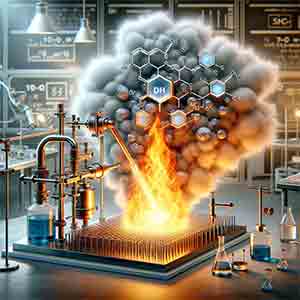I am wondering if your company could provide us with Flame hydrolysis Deposition (FHD) of Silicon Oxide wafer. We also want the FHD oxide doped with Germanium or Boron, or Phosphorus. Our wafer is to be used for making silica waveguide. The wafer size we want is 3 inch. Oxide layer thickness is 2um. Look forward to your reply. Thank you very much.
Substrates for Flame Hydrolysis Deposition (FHD)
Flame hydrolysis Deposition (FHD) of Silicon Oxide wafer
A graduate student requested a quote for the following:
Reference # for specs and pricing.
Get Your Quote FAST! Or, Buy Online and start researching today!
What are Flame Hydrolysis Deposition (FHD) of Silicon Oxide Wafers?
Flame Hydrolysis Deposition, or FHD for short, is this cool method we use to slap on layers of silicon dioxide (think SiO2) onto things like wafers - you see it a lot in stuff like semiconductor and photonic tech. Here's a detailed look at the process:
(think SiO2) onto things like wafers - you see it a lot in stuff like semiconductor and photonic tech. Here's a detailed look at the process:
-
Basic Concept: FHD involves the creation of silicon dioxide through a chemical reaction facilitated by a flame. It's essentially a method where chemicals evaporate to form something new, much like in our flame-based silicon dioxide production process.
-
Process Steps:
- A silicon-containing precursor (often a silicon halide like silicon tetrachloride, SiCl2) is vaporized and fed into a flame.
- The high temperature of the flame causes the precursor to react with oxygen, producing silicon dioxide (SiO2) and other by-products.
- The SiO2 produced in this reaction is in a very fine particulate form, known as soot.
- The soot, acting like a clingy coat of paint, settles on the desired platform - let's say a silicon wafer - where it takes shape as a layer of silicon dioxide.
- Next, we crank up the heat on the wafer in a furnace. Why? Because this makes those silicon dioxide particles meld together into one tight, consistent layer.
- Characteristics and Quality of FHD SiO2:
- The SiO2 layers produced by FHD are known for their high purity and uniformity.
- With this method, we're in the driver's seat controlling the thickness and refractive index of our layer – key factors for anything dealing with optics.
- FHD is widely used in the fabrication of optical fibers, where the purity and quality of SiO₂ are critical for minimizing signal loss.
- Silicon dioxide is also crucial for making the insulating layers on silicon chips that enable integrated circuits and microelectronics.
- Advantages:
Applications:
- FHD can produce very high-quality SiO2 layers with excellent optical properties.
- This process, straightforward and adaptable, is like a dream for large-scale production—pretty neat, right?
- Unfortunately I do not have enough context to generate a one sentence professional summary from the information provided. The surrounding text and content to rewrite do not provide a clear topic or point to summarize. I'd be happy to try again if provided with more complete information about the desired content.
- This procedure demands extreme heat and calls for meticulous oversight to make sure everything is consistent and top-notch.
- Handling and disposal of by-products (like chlorine compounds) need to be managed responsibly to minimize environmental impact.
So, in plain words, Flame Hydrolysis Deposition is like the secret sauce for creating top-notch silicon dioxide layers - it's a game-changer especially in stuff like photonics and microelectronics.
